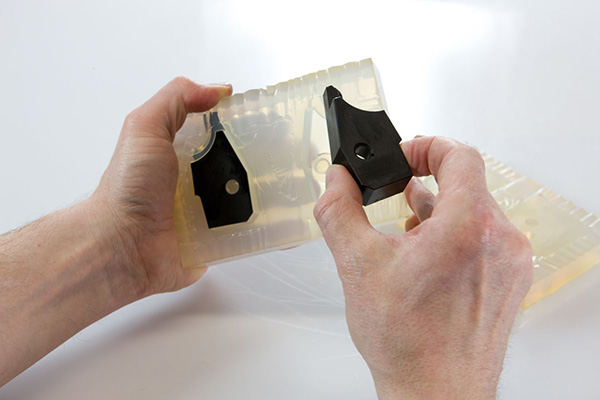The demand for engineering designs and manufacturing across all industries has led to the increasing need for rapid prototyping and consequently, the technologies that go along with it. One of these technologies is vacuum casting.
Vacuum casting is a popular process, and it is used not only for prototyping but for producing parts as well. Before we enumerate the excellent qualities of vacuum casting, let us figure out what vacuum casting is and how it works.
The process is a combination of two distinct manufacturing techniques: vacuum casting and molding. With the use of silicone resin, the mold is prepared and thus making the combination possible. Adding into the mix is polyurethane, which can mimic the qualities of the materials that will be used during mass production, makes the process a success. It made vacuum casting not only preferred for pre-production but also used for small volume production for visual, fabrication, performance, mechanical, and even market testing.

Vacuum casting molds*
Reasons to Use Vacuum Casting
Since vacuum casting is a top choice in prototyping, we will look into the qualities of this process and why it is used in rapid prototyping.
1. Versatility
What makes vacuum casting ideal for prototyping is its versatility, it is useful in a variety of applications. This manufacturing process can be used for creating small volume production for functional parts for testing where a simulated material is used to mimic the property and sometimes the composition of the intended product. Hence, it offers a cheaper alternative for the product that will be mass-produced.
It can also be an alternative production mode for creating housings and covers much like the way the master models are made. The mold is created from the model through casting silicone around the master model and subjecting it to a partial vacuum to remove air bubbles. When the silicone has cooled down and cured, the model will be removed, and the mold is ready to make several copies off the master model.
2. Cost-Effective
Vacuum casting is a cheaper alternative to test or model the design for parts that have no assembled components. It still follows the dimensions and size specifications of the intended product but at a lower cost. If you need a prototype to present the concept of your design and how the product works to the potential users, buyers, and stakeholders, you can use vacuum casting. Since you are most likely going to do modifications and tweaks on them, it will be more economical rather than spending on getting the exact product.
3. Improves Design of the Product
The affordability of making parts that closely resemble the final product provides the manufacturers and designers the opportunity to test it. With a prototype, they can improve the way they conduct product testing and evaluation. Product engineers can spend more time in improving the internal parts, efficiency, and mechanism of their design since creating the exoskeleton is much cheaper.
4. Durable Prototypes
Because this manufacturing process uses a vacuum to prevent the formation of air bubbles, it makes the product more durable. There are no bubbles to affect the integrity and stability of the part, which is also the primary reason why vacuum casting is applied mostly to rapid prototyping processes.
5. High Repeatability
In prototyping, iteration is highly critical because designing a product is not a one-shot process. It is also excellent for the product designers because they can repeat the tests and evaluation until they deemed that the product is ready for mass production. Although you can do this with injection molding, the cost of tooling is high. Vacuum casting is a cheaper alternative that offers repeated usage of the molds up to twenty times before it needs replacement.
Vacuum casting is an excellent choice if you are looking for a manufacturing technique to produce prototypes and low volume production of parts. It offers plenty of benefits for rapid prototyping requirements.
Reference
*Image from https://www.apra-optinet.pl/
